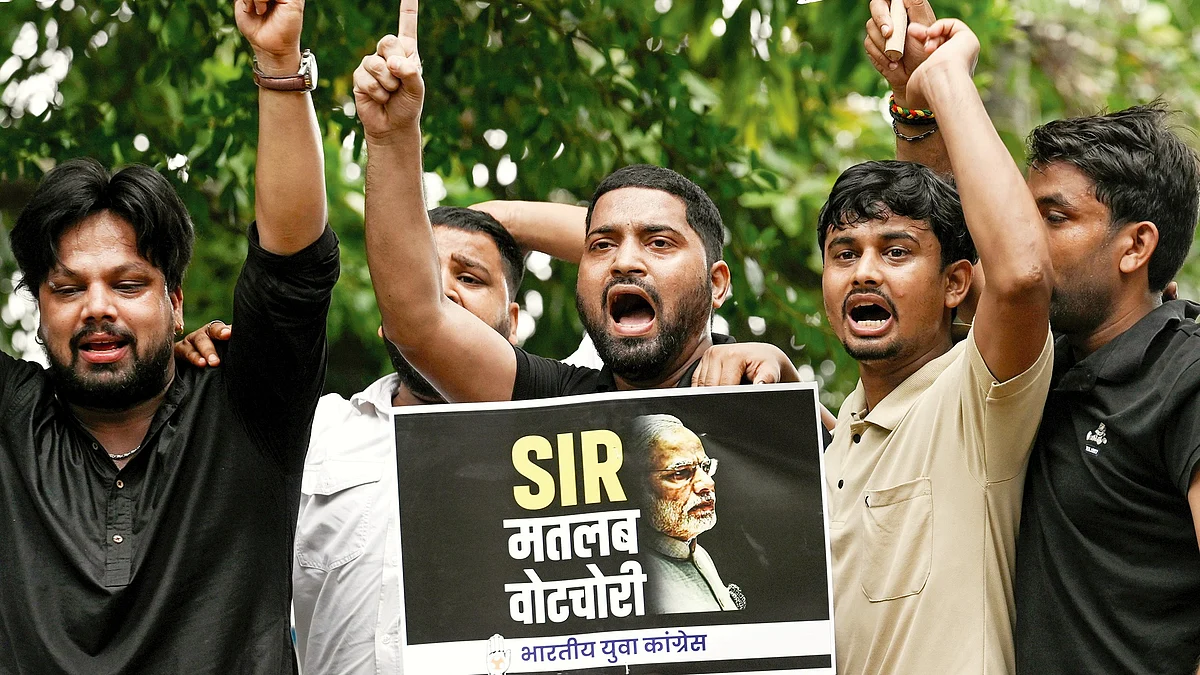SIR sensation! Software to eliminate duplication not used by ECI in Bihar
A Reporters’ Collective investigation claims the ECI’s neglect of de-duplication tech left the electoral roll full of errors after the special intensive revision

The Reporters’ Collective, a collaborative media outlet for investigative journalism, on Sunday, 12 October, reported that the Election Commission of India did not use the de-duplication software it has had since 2018 — and which it has selectively used in the past. As a result, even after the special intensive revision, the electoral roll in Bihar is replete with errors, duplications and fraudulent entries. A jigsaw left incomplete, questions linger: what did the exercise truly achieve?
Well, there is one piece of the SIR jigsaw puzzle that the Reporters’ Collective appears to have found and pinned into place.
The SIR of electoral rolls in Bihar, conducted by the Election Commission of India between 25 June and 30 September, claimed to have ‘purified’ the voters’ list; the final list, however, includes a surprisingly large number of deceased and duplicate voters — besides millions of voters clubbed together at the same addresses. What, then, did the exercise achieve?
While that question still awaits an answer, the Reporters’ Collective’s Sunday report has confirmation from a senior official of the ECI and at least four electoral registration officers (EROs) in Bihar that the de-duplication software was not used in Bihar during the exercise. Neither the ECI nor the chief electoral officer of Bihar, Vinod Singh Gunjial, replied to a questionnaire mailed by the Collective. When a reporter from the Collective did manage to obtain a brief audience with Gunjial in Patna, he refused to answer any questions.
Whatever the commission has to say, Gunjial indicated, would be communicated to the Supreme Court bench that is currently hearing the petitions challenging the SIR.
Gunjial also sought to intimidate the reporter, reminding him that before publishing anything, the Collective should remember that the Model Code of Conduct was now in force. The MCC does not, however, prevent the media from asking questions of the ECI or from reporting facts. It pertains, as far as we knew so far, to the behaviour of political parties contesting a given election.
The problem that the Collective’s report has solved is this: Not using the de-duplication software would explain the anomalies in the electoral rolls reported from not just Bihar, but also from other states such as Maharashtra in the last elections, in 2024.
In Bihar, the EROs told the Collective that contrary to the 2024 Lok Sabha polls, officials in the state were this time not given access to the software to detect fraud and duplication. Nor did the ECI apparently apply the software to the central database in Delhi. It was left to local EROs and BLOs to manually and physically verify details disclosed in the enumeration forms.
The Reporters’ Collective has already reported finding 5.56 lakh suspected duplicate voters in 142 assembly constituencies earlier, and finally 14.35 lakh such cases across all the 243 constituencies in the final list of electors released on 30 September by the ECI. As many as 3.4 lakh entries, the Collective found, were exact matches — with the same name, age and relative’s name.
The SIR also failed to detect hundreds of electors bundled together, irrespective of their caste and community, in the same house or address — although the ECI’s own rules say that 10 or more voters at the same address need to be physically verified.
Groups of 20 or more voters were actually registered by the ECI at various ‘dubious’ and ‘fake’ addresses in the final Bihar list. There were at least 20 households, with more than 650 voters, registered wrongly.
The EROs told the Collective that in 2024, the Bihar CEO had shared with them lists of 5,000–7,000 entries from every constituency that were suspected to be dubious or duplicate entries — these had been detected by the software programme and were highlighted for verification.
During this year’s SIR, however, they received no such list either from the ECI or the CEO, Bihar.
It was in 2016 that then-chief election commissioner Dr Nasim Zaidi announced the National Electoral Roll Purification scheme — the NERP 2016.
By 2018, the ability to find ‘suspect’ (potentially duplicate) entries via machine learning was in the hands of state election officials as well, incorporated into ECI’s IT interface for electoral officers, called ERONET…
The ECI’s presentations on ERONET reveal that this application can flag entries that are demographically similar and thus suspect. In other words, it detects similarities in voters’ names, names of relatives, addresses, and ages to identify suspected duplication and cases of fraud. It can also match photographs on voter IDs (EPIC) to detect potential fraud and duplicates, explains the Reporters’ Collective report.
The question that remains now is why the Election Commission did not use the software during the SIR.
The ECI also needs to come clean and declare whether it has been using the software selectively, or whether it has simply not been using it in select states or constituencies?
And then, maybe it can continue to explain why it is playing these games and allowing anomalies to continue in the electoral rolls it is supposedly looking to iron out into some semblance of consistency and accuracy at considerable expense to the public exchequer.
Follow us on: Facebook, Twitter, Google News, Instagram
Join our official telegram channel (@nationalherald) and stay updated with the latest headlines
